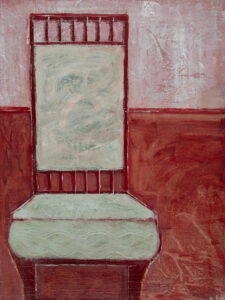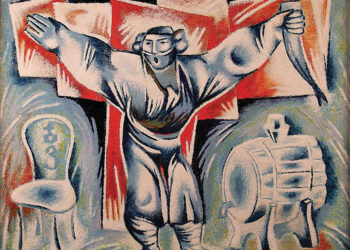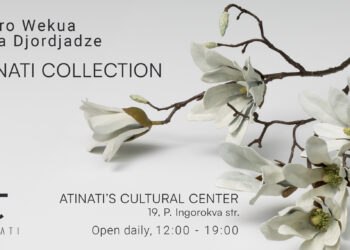From 19 to 29 May, Bonhams is hosting its first dedicated sale of Georgian art in London—an event that marks a considered step toward greater international visibility for the country’s contemporary artists. Titled Georgian Art Now, the auction brings together a carefully selected group of practitioners whose work speaks to the complexity and richness of Georgia’s creative culture. Among them is Teona Paichadze, a painter based in Tbilisi.
Paichadze’s mixed media works often explore themes of memory—both personal and collective—expressed through a visual language that is subtle, intimate, and emotionally resonant. A graduate of the Tbilisi State Academy of Fine Arts, she has exhibited widely in Germany, Turkey, and across Eastern Europe, with her work held in both public and private collections throughout the region.
We spoke with Paichadze about the evolution of her practice, her response to being included in this landmark auction, and the quiet emotional undercurrents that continue to shape her work.
Congratulations on having your work included in the historic Bonhams auction—this is the first time Georgian art will be presented as an independent category by the renowned international auction house. What does this moment mean to you?
It’s a tremendous honor. I’m deeply grateful to Vere Gallery for their trust and support. Bonhams is one of the most prestigious art institutions in the world, and I feel a profound sense of responsibility—both professionally and personally. I must admit, I’m a little nervous too. But for me, this isn’t just a significant career milestone; it’s also a kind of recognition and a calling to remain faithful to my creative path.
Tell us more about your journey as an artist and designer. Who or what has most influenced the development of your artistic style?
I’ve been fascinated by drawing since childhood—art has always been an organic form of self-expression for me.
During my studies at the Nikolozade Art School, I was deeply influenced by the work of Edmond Kalandadze. His distinctive color palette and emotional depth still mesmerize me today. That emotionality, in my view, is something painting must always carry.
Later, I continued my education in easel graphics at the Tbilisi State Academy of Arts, which naturally led to a shift in my style.
It’s difficult for me to pinpoint a single influence. I try to distance myself from external references as much as possible—though, of course, that’s never entirely achievable. Reinventing a bicycle is the privilege of geniuses; the rest of us strive to find our unique interpretation of what has already been expressed.
Could you tell us more about the specific works that are being presented at Bonhams? Why did you choose these particular pieces?
The decision was made by my curator, and I fully trust their intuition. Often, others are better positioned to perceive and evaluate the energy or aesthetic impulses a work conveys—something that can be challenging for the artist themselves. That’s why I gave the works full freedom to speak for themselves.
Bonhams is a globally respected auction house with a strong curatorial reputation. What aspect of your art or narrative would you most like to highlight to an international audience?
I want the viewer to feel emotion. For me, art isn’t just a visual experience—it’s a deep, internal reaction. The main thread in my work is silence and sorrow. These are emotions rooted in painful personal experiences, particularly related to the occupied territories of Georgia. It’s a quiet expression of loss and emptiness that, on canvas, takes on a kind of lyrical quality. I believe the emotional layer in my work can resonate universally, allowing viewers to connect it to their own experiences and inner world.

How would you assess the significance of this first Georgian auction at Bonhams for Georgian artists? More broadly, what trends do you currently observe in the Georgian art scene?
This auction is a major event—not only in terms of introducing Georgian art to an international audience, but also in terms of professional validation. Georgian art has always stood out in the post-Soviet space, but we’ve lacked global visibility. Entering the international arena—as this auction helps us do—also allows us to see ourselves differently.
Right now, I think our society is going through a phase of internal upheaval, and naturally, that turbulence is reflected in the arts. This moment is marked by expressive boldness—even artistic provocation. Over time, these processes will be seen for what they are: profound creative responses to an era of transformation.
If you could collaborate with any Georgian or international artist, who would it be, and why?
Irakli Parjiani. His work has a rare inner voice—it feels as though it’s speaking directly to you. His relationship with line and light carries an incredible delicacy and weightlessness, as if he’s not just depicting a visual reality but trying to transfer an inner state onto the canvas.
And of course, Picasso. I believe that to tell the truth, an artist must be willing to destroy old stereotypes and ideals. His work exudes complete freedom—even from self-censorship.
Georgian Art Now, which marks the first historic sale of Georgian works at a major international auction house, is open for bidding. The sale closes on May 29. For details please visit.














